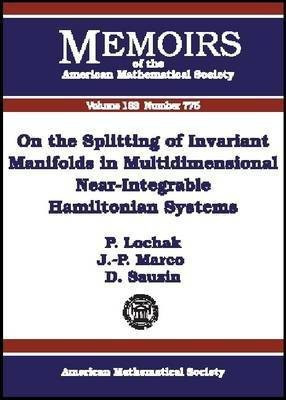On the Splitting of Invariant Manifolds in Multidimensional Near-integrable Hamiltonian Systems(English, Paperback, unknown)
Quick Overview
Product Price Comparison
In this text we take up the problem of the splitting of invariant manifolds in multidimensional Hamiltonian systems, stressing the canonical features of the problem. We first conduct a geometric study, which for a large part is not restricted to the perturbative situation of near-integrable systems. This point of view allows us to clarify some previously obscure points, in particular the symmetry and variance properties of the splitting matrix (indeed its very definition(s)) and more generally the connection with symplectic geometry. Using symplectic normal forms, we then derive local exponential upper bounds for the splitting matrix in the perturbative analytic case, under fairly general circumstances covering in particular resonances of any multiplicity.The next technical input is the introduction of a canonically invariant scheme for the computation of the splitting matrix. It is based on the familiar Hamilton-Jacobi picture and thus again is symplectically invariant from the outset. It is applied here to a standard Hamiltonian exhibiting many of the important features of the problem and allows us to explore in a unified way the question of finding lower bounds for the splitting matrix, in particular that of justifying a first order computation (the so-called Poincare-Melnikov approximation). Although we do not specifically address the issue in this paper we mention that the problem of the splitting of the invariant manifold is well-known to be connected with the existence of a global instability in these multidimensional Hamiltonian systems and we hope the present study will ultimately help shed light on this important connection first noted and explored by V. I. Arnold.


